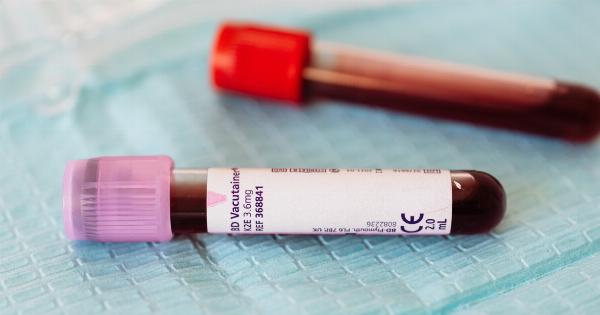A new blood test that can detect breast cancer relapses much earlier than currently available methods has been developed by scientists from the University of Leicester.
The non-invasive test could potentially save the lives of thousands of women each year by detecting relapses long before they become clinically apparent, enabling earlier treatment interventions.
What Is Breast Cancer and How Is It Treated?
Breast cancer is a type of cancer that starts in the cells of the breast. It occurs when the normal cells in the breast change and grow uncontrollably, forming a mass (called a tumor). The tumor can be benign (not cancerous) or malignant (cancerous).
The treatment for breast cancer depends on several factors, including the stage of the cancer, the type of cancer, and the patient’s overall health. Options may include surgery, radiation therapy, chemotherapy, hormone therapy, and targeted therapy.
Why Is Early Detection Important?
The earlier breast cancer is detected, the easier it is to treat.
According to the American Cancer Society, the five-year survival rate of breast cancer patients is 99% if the cancer is detected early (localized), but only drops to 27% if it has spread to other parts of the body (metastasized). This is why routine breast cancer screening is so important, as it can identify early-stage cancers before they have a chance to spread.
What Are the Current Methods of Detecting Breast Cancer Relapses?
Once someone has been treated for breast cancer, the goal is to detect any potential relapses or metastases as early as possible.
This can be done through imaging tests such as X-rays, CT scans, MRI scans, and PET scans, which can detect tumors in the body.
However, these imaging tests can only detect tumors once they have grown to a certain size (usually a few millimeters in diameter), which means they may not detect early-stage relapses.
In addition, imaging tests can be expensive and time-consuming, and may expose patients to radiation.
How Does the New Blood Test Work?
The new blood test developed by the University of Leicester researchers looks for circulating tumor DNA (ctDNA) in the bloodstream. This ctDNA is shed by tumors into the bloodstream and can be detected using a simple blood test.
One advantage of ctDNA testing is that it can detect tumor DNA even when the tumor is very small or not visible on imaging scans. This means that the test can potentially detect relapses earlier than current imaging techniques.
The researchers tested the new blood test on a group of 49 breast cancer patients who had recently completed treatment.
Over the course of the study, the test accurately detected all of the breast cancer relapses that occurred, with an average lead time of more than six months compared to standard imaging methods.
What Are the Benefits of the New Blood Test?
The new blood test has several potential benefits, including:.
- Early detection of breast cancer relapses, which can lead to earlier treatment and improved outcomes
- Reduction in the need for expensive and time-consuming imaging tests
- Lower exposure to radiation from imaging tests
- A more convenient and less invasive testing method for patients
What Are the Next Steps for the New Blood Test?
The University of Leicester researchers are now planning larger-scale clinical trials to further validate the accuracy and effectiveness of the new blood test.
If these trials are successful, the test could potentially become a routine part of breast cancer follow-up care in the future.
Conclusion
The new blood test developed by the University of Leicester researchers has the potential to revolutionize the way breast cancer relapses are detected and treated.
By detecting circulating tumor DNA in the bloodstream, the test can potentially detect relapses much earlier than current imaging techniques, leading to earlier treatment interventions and improved outcomes for patients.



























